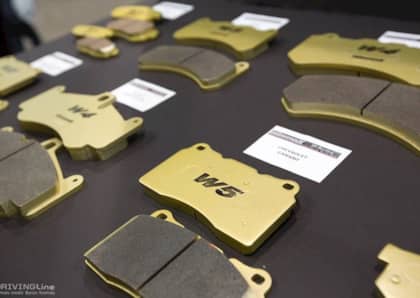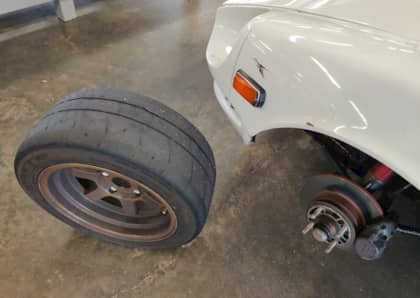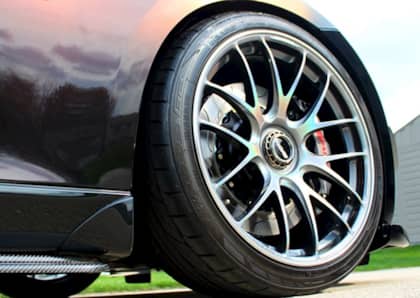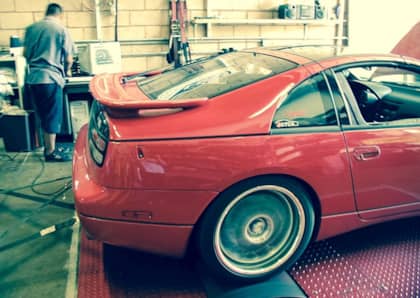Which Brake Rotors Are Best For High Performance Driving?
Choosing the right high performance brake rotors can be more than a little confusing. With several design and materials choices on the market, and passionate enthusiasts on all sides of the conversation, it's not always easy to know which brake discs are the best match for your particular needs. As with brake pads, you also need to make sure to match up your rotors with the type of driving you'll be doing, and the tire design that you'll be installing on your car. Ultra high performance rubber such as the Nitto NT01 often dictates the need for better heat management than a more street-oriented truck tire like the Nitto NT420V would.
It's helpful to enter this arena with a solid understanding of how different brake rotor types impact your vehicle's stopping capabilities. Whether you're autocrossing, towing, or lapping a road course, rotor design has an impact on how quickly you can stop, how many times you can mash the pedal before your system gives up, and the overall lifespan of your braking components.
Smooth, Smooth, Smooth
Don't ever discount the smooth, 'blank' steel rotors that came with your car. For all of their lack of ornamentation, blanks are quite versatile when it comes to operating in many different environments. Their surface is easy on pads, which extends the number of miles you'll get out of a set, and they offer excellent strength even when faced with changing temperatures, rapid cooling on wet roads, or high temperatures from emergency stops or repeated laps.

The last point is an important one. If you're towing a heavy trailer, or driving on a race track, the knowledge that your rotors aren't vulnerable to cracking or catastrophic disintegration due to shock or stress is peace of mind that steers many a racer or truck owner away from the next option on our list.
Drill Down
Drilled, or 'cross-drilled' rotors feature a set of holes along the face of the disc. Given everything mentioned above about the importance of rotor strength when being used in more extreme circumstances, it might seem counter-intuitive to remove metal from the very component you need to stay in one piece under duress.
You're not wrong. Cross-drilled rotors are somewhat controversial in the performance driving world, for exactly the reasons we've discussed: less material leads to a weakened structure. Those in favor of this type of design, however, point to the perceived benefits associated with the presence of these holes.

The first is heat dissipation. In theory, the heat that builds up between a brake pad and the brake rotor will cool down more quickly if it can vent directly to the air, and the drilled spots allow for this to occur. Some also point to the dissipation of any gas that could expand between the pad and the rotor as the pad's materials are cooked and shaved by friction.
The next most common argument for cross-drilled rotors has to do with wet weather performance. The concept is similar—holes in the disc surface allow for water to escape more readily, improving overall stopping performance (which is negatively impacted when a wet layer gets between the pad and the disc).
Is the extra performance truly with the risk, or is it so incremental that a blank is the best bet? The decision is yours to make, but we'll throw in the caution that even factory cross-drilled discs have a reputation for cracking at the race track. Think of these as being appropriate for street use—in a truck and trailer setup, or for canyon carving - but not quite up to par for motorsports.
Number One Slot
Slotted rotors offer something of a compromise for those seeking to balance strength and stopping power. Instead of holes, these designs feature short trenches carved into the face of the disc, at a diagonal to its center, that reach almost from edge to edge.

What do these slots do? The benefits are similar to cross-drilled rotors, in that they are intended to channel heat and gasses away from the pad and disc surface that much quicker. Slotted rotors also offer another advantage that cross-drilled designs don't, in that the slots provide extra 'bite' against a pad, which translates into a stronger initial stop.

As with cross-drilled discs, slotted rotors are weaker than stock blanks due to the loss of material on their face, although it's worth noting that they are generally stronger than a drilled units, and are considerably safer in competition. Just avoid the slotted AND drilled brake rotors that you'll often see advertised, as they're the weakest possible combination.
The other caveat is that the slots themselves will munch your pads more quickly than any other type of rotor, which can be an issue for endurance racers or for those who try to squeeze the most mileage out of their braking system.
Carbon Costs
So far, each of the brake rotor designs we've discussed have made the assumption that we're talking about cast iron or steel. There is another level of disc out there that solves a few of the above-listed problems, while introducing a host of additional benefits.
We're talking of course about carbon ceramic brake rotors. Instead of steel, these discs are made by a fairly involved industrial process that takes carbon fiber, silicon resin, and high levels of heat to create a silicon carbide component that is many, many times stronger than a traditional iron blank.

What does a carbon ceramic brake rotor bring to the table? In addition to being more rugged than steel, they are also significantly lighter (reducing unsprung weight), manage heat much more efficiently, offer exceptional friction when matched with the correct pads, and are a lot quieter than a traditional disc. Cross-drilling is also much safer, given the additional strength of the material itself, and you almost never have to replace them in regular driving. Even under the stress of performance driving, the amount of use you'll get out of a carbon fiber rotor is a multiple of the miles returned by a steel disc.
The downside? Due to the amount of time and energy involved in their production, carbon ceramic rotors are very expensive as compared to steel. In some ways this increase can be justified by the additional life that comes with the carbon ceramic material, but it's still a major leap, with a differential often measured in thousands of dollars. Then there's the brake feel in everyday driving which isn't as linear as what one expects from a standard setup, which can make it more difficult to modulate the pedal.
If your budget allows - and you don't mind moving over to a completely different set of brake pad compounds compatible with carbon ceramics - then these brakes are the best choice for hardcore performance on the race track. On the street, there's little advantage to these types of rotors in a sports car or sedan, but for those who tow very heavy loads through mountainous areas, the ability to ignore the dangers of heat build-up and not worry about fade on long downhill stretches makes them an appealing (if high-priced) choice.
Looking for a broader approach to improving your braking? We've got you covered with this comprehensive guide.











